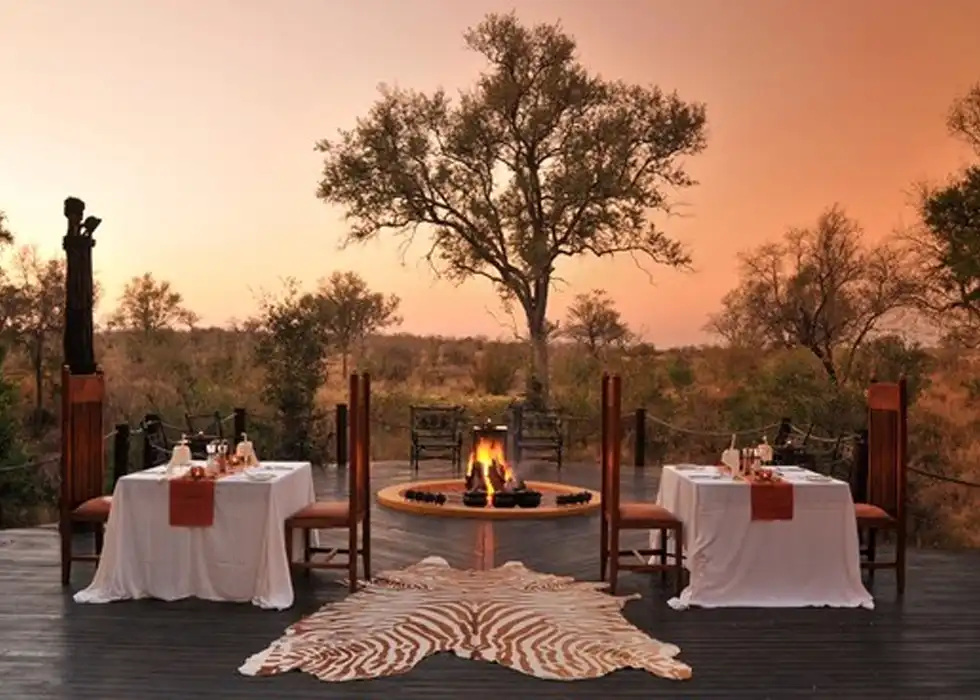Serengeti Hot Air Balloon Safari
Hot Air Balloon Safari: Soaring Above the Serengeti

The Great Migration stands as a testament to the awe-inspiring wonders of the natural world. With up to 1,000 animals per square kilometer, the majestic columns of wildebeest are so vast that they can be observed from space. This unparalleled phenomenon involves over 1.2 million wildebeest, accompanied by 300,000 zebra, as well as topi and other gazelle, embarking on an extraordinary journey through the Serengeti-Mara ecosystem in search of vital sustenance and water.
FAQs About the Great Wildebeest Migration
What is the Great Wildebeest Migration?
The Great Wildebeest Migration is the largest herd movement of animals on the planet. It involves over 1.2 million wildebeest, accompanied by 300,000 zebra, as well as other grazers, traversing the Serengeti-Mara ecosystem in search of grass and water.
When does the Great Migration occur?
The migration is a year-round cycle, but the peak movement typically occurs from late November to August, with variations depending on weather patterns and the availability of grazing.
Where does the Great Migration take place?
The migration spans the Serengeti plains in Tanzania and the Masai Mara in Kenya, covering a vast area as the herds move in search of fresh grazing and water sources.
What triggers the Great Migration?
The migration is primarily driven by the availability of food and water, which are influenced by seasonal rains. The herds follow the rain patterns and the growth of new grasses across the landscape.
How far do the wildebeest migrate?
Each wildebeest covers a distance of 800 to 1,000 kilometers during the migration, embarking on a remarkable journey along age-old migration routes.
What predators do the wildebeest face during the migration?
The migrating herds face a myriad of predators, including lions, leopards, cheetahs, hyenas, wild dogs, and crocodiles, all of which prey on the weaker or more vulnerable individuals.
What are the dangers encountered during the migration?
The migration poses numerous hazards, including river crossings where animals risk drowning or falling prey to crocodiles, as well as exhaustion, injury, and predation by carnivores.
What role do zebras and other grazers play in the migration?
Zebras and other grazers accompany the wildebeest herds during the migration, forming a symbiotic relationship where their combined presence helps in detecting predators and sharing grazing resources.
How long does the Great Migration last?
The migration is a continuous cycle that lasts throughout the year, with the timing and duration of specific stages varying depending on environmental factors such as rainfall and grass availability.
Is the Great Migration visible from space?
Yes, the sheer size and density of the migrating herds are so vast that they can be observed from space, making it one of the most remarkable natural phenomena on Earth.
Speak To an Expert
Get advice and suggestions to make this your perfect trip.
Call: +41 774 84 047
Let's Chat on WhatsApp
DESIGN A TOUR
DISCOVER EXCLUSIVE TANZANIA SAFARIS
Tanzania Safari
Journey through the heart of Tanzania's wild landscapes with our expertly guided safaris
Kilimanjaro Climbing
Standing at 5,895 meters, the summit of Kilimanjaro is the highest point in Africa
Design your own trip
Let's Customize a Tour Based on Your Budget and Your Style


